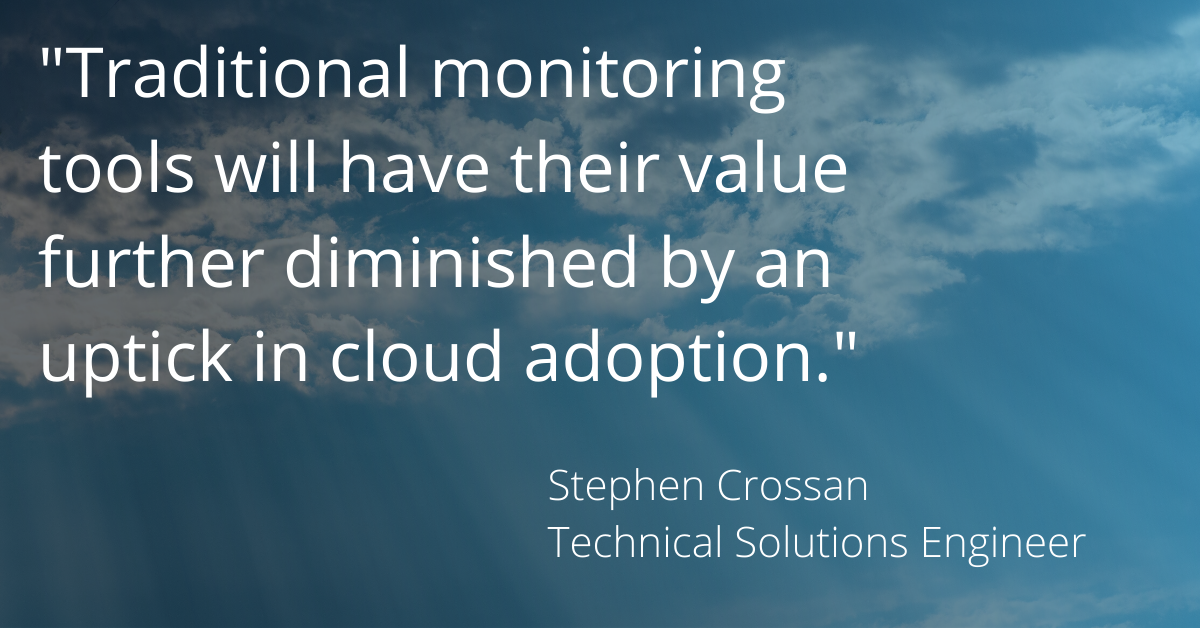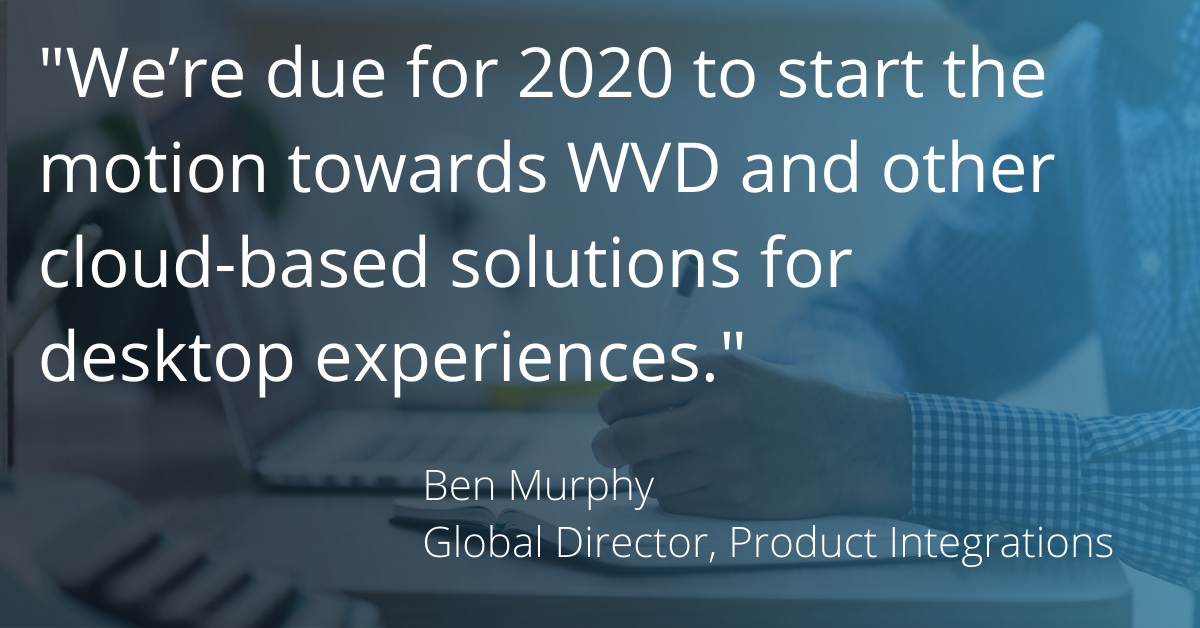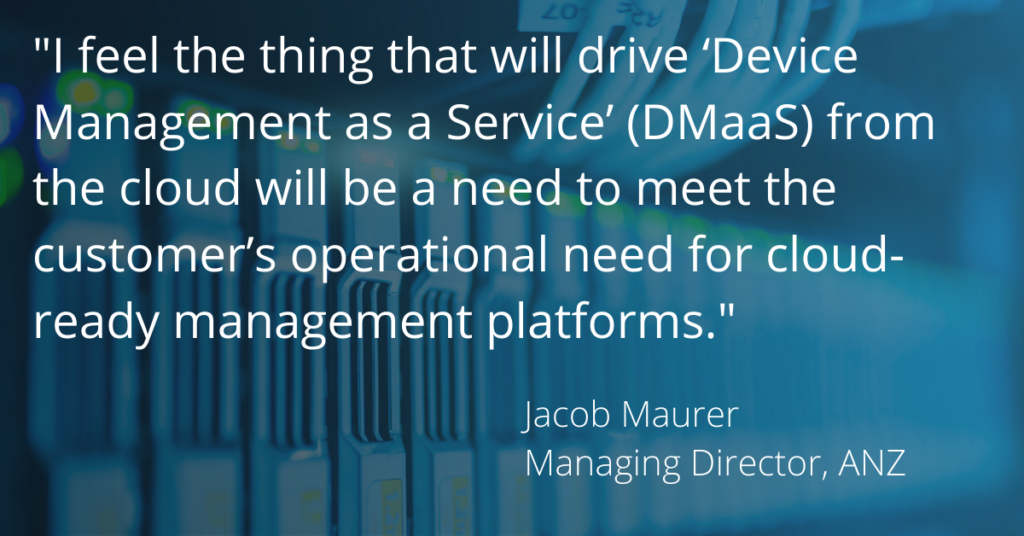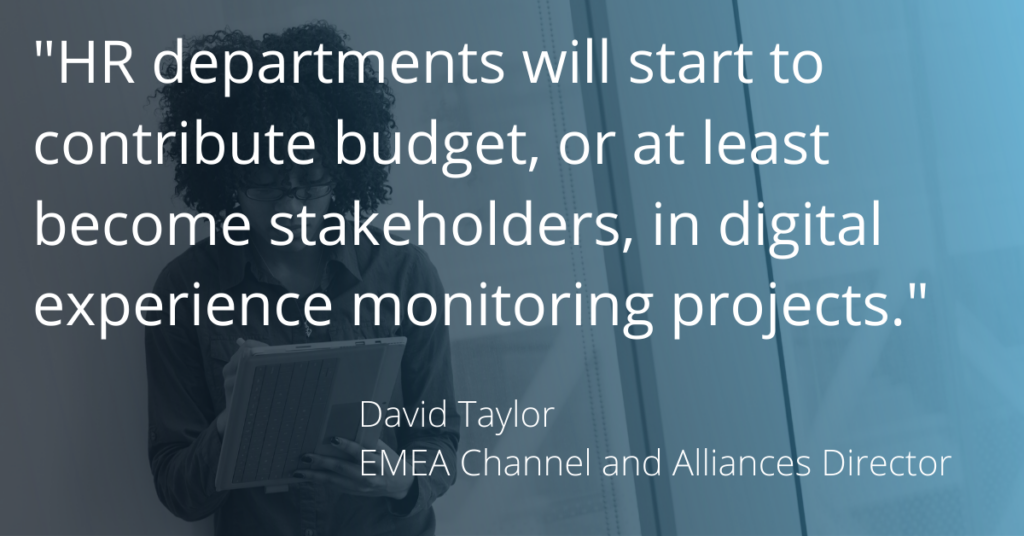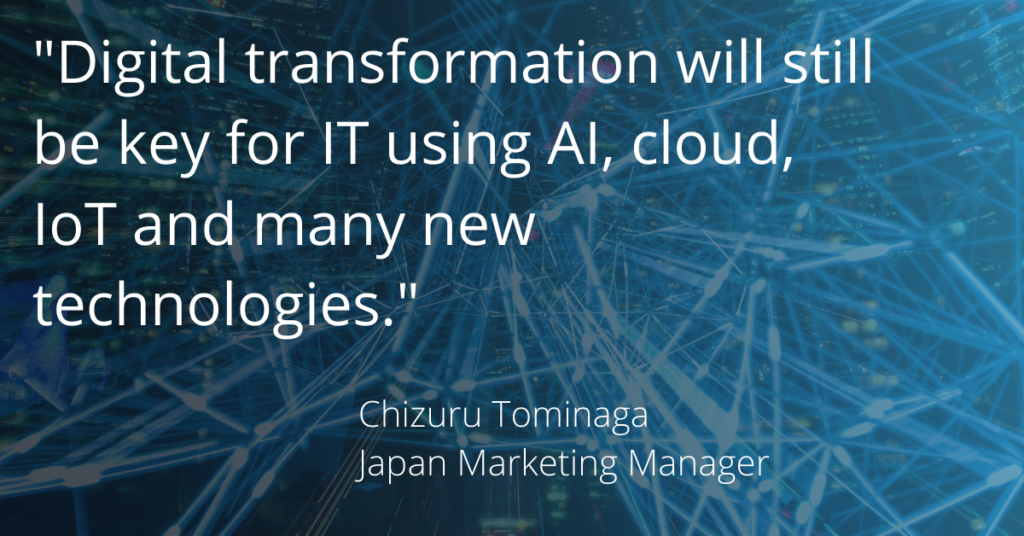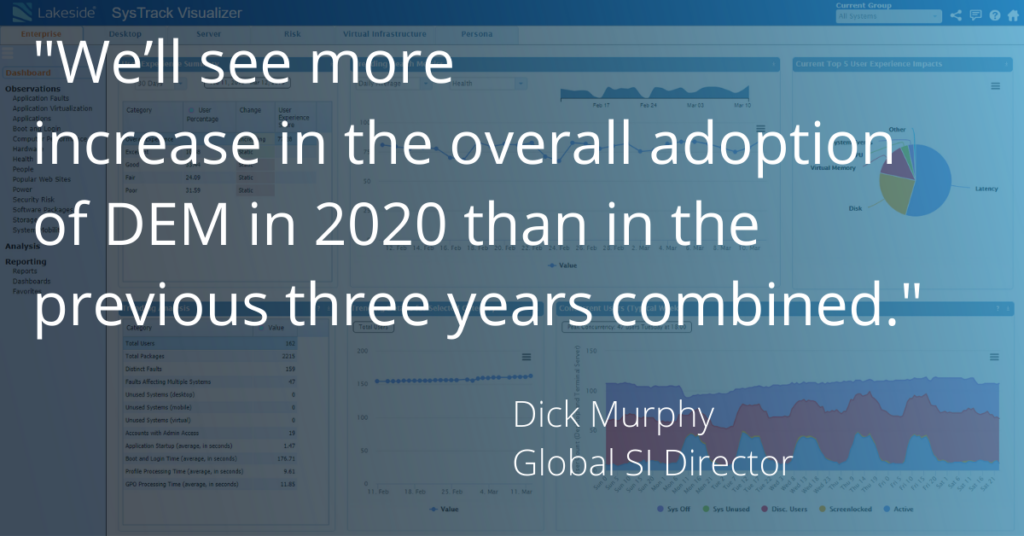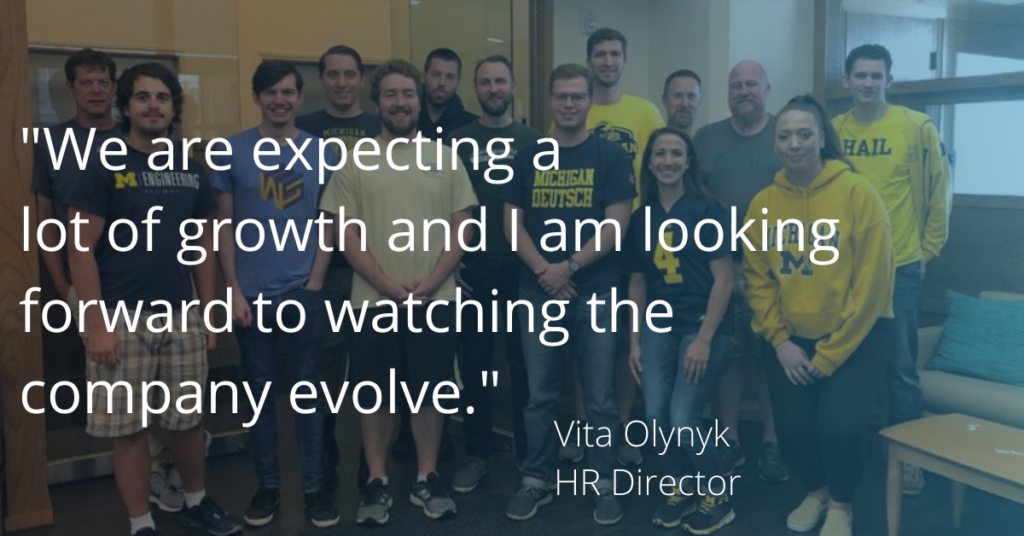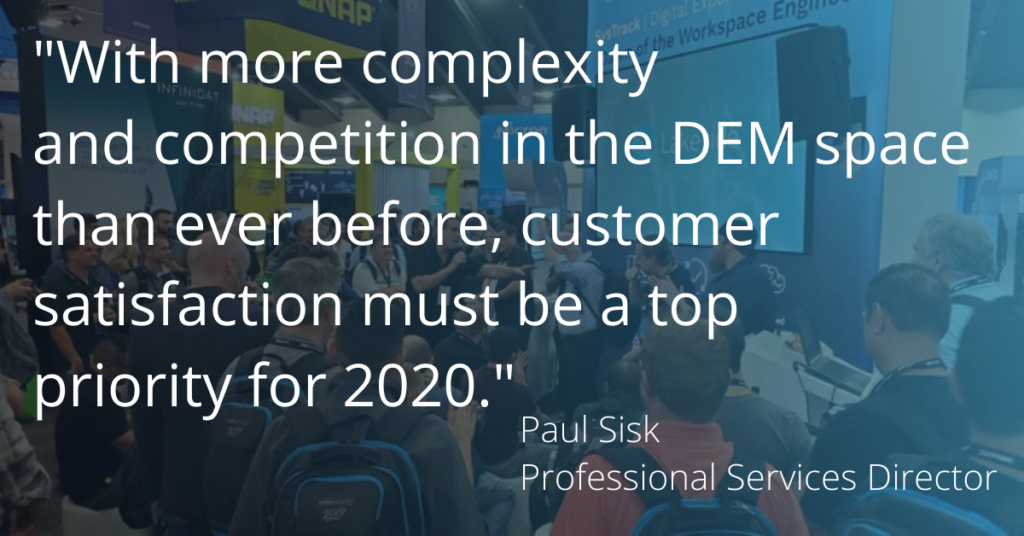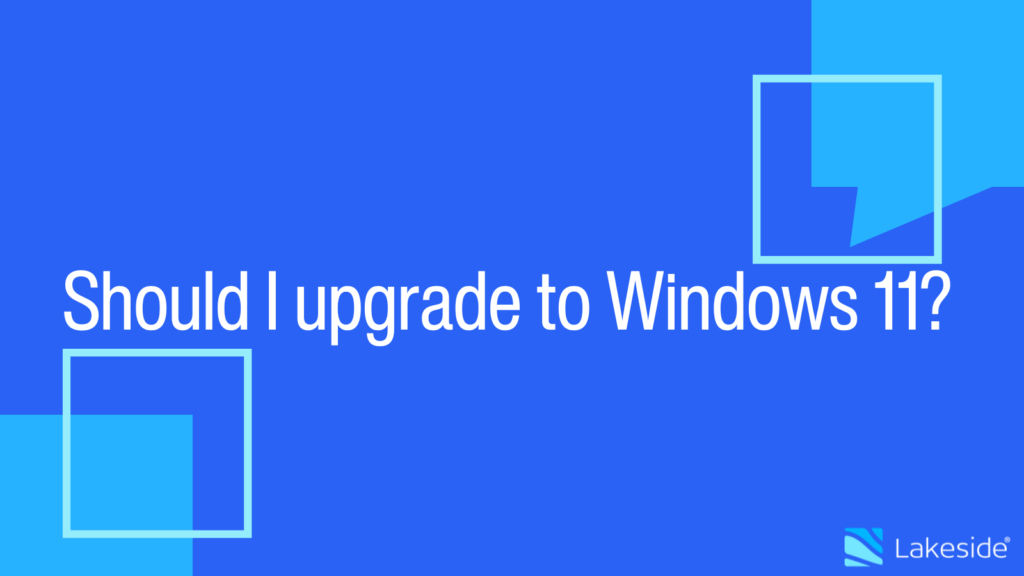
Technology is advancing all around us in ways that will influence how we live and work in the near future. As digital leaders, IT professionals know the importance of staying aware of these changes and driving strategic innovation.
To help you spot trends to watch in 2020, I’ve asked Lakeside thought leaders from around the globe to weigh in on where they think the digital workspace is headed next.
Trend #1: Increased cloud adoption will create visibility gaps
Cloud and SaaS solutions have exploded in popularity these past few years due to their ease of delivery and consumer preference. While great for enabling anytime, anywhere access to IT resources, third-party service delivery presents visibility challenges.
“Traditional monitoring tools will have their value further diminished by an uptick in cloud adoption, leaving the endpoint as the sole surviving, and only meaningful, way to measure the performance of IT,” says Stephen Crossan, technical solutions engineer. “This will cause an unavoidable shift in the way of thinking, as now the end user becomes the instrument to measure success, whether IT teams intended it or not.”
Trend #2: DaaS growth will alter device requirements
Ben Murphy, global director of product integrations, has been working alongside Microsoft to help companies assess their readiness for Windows Virtual Desktop.
Here’s how Ben sees cloud desktops influencing the industry in 2020: “Based on what I’ve seen evolving in the market I think we’re due for 2020 to start the motion towards WVD and other cloud-based solutions for desktop experiences; this should increase the rate of client devices being treated more as commodities. Eventually I anticipate this will inspire more abstraction of the actual applications into cloud services that don’t depend on a traditional workflow.”
Trend #3: Use of cloud device management will increase, opening new opportunities for machine learning and automation
“This is the year we will see a significant uptake of holistic desktop and device management from the cloud,” says Jacob Maurer, managing director, ANZ.
Why? According to Jacob, “VDI and cloud VDI, or DaaS, has been a threatening sector for years but is still fringe technology in many respects. We are reaching a point of critical mass now where we will see a big uptake in cloud device management, less so for DaaS or cloud-delivered desktops. Interestingly, I feel the thing that will drive ‘Device Management as a Service’ (DMaaS) from the cloud will be a need to meet the customer’s operational need for cloud-ready management platforms which is becoming pervasive and accepted across all operational platforms.”
Why are customer needs evolving?
“Previously, security, risk, BYOx workstyles, and productivity would drive customers to deliver workspace and desktop from the cloud,” says Jacob. “But, as we have seen, the cost and technical limitations didn’t lead to broad adoption nor did the outcomes-based drivers. With a simpler and proven outcome, ‘cloud management,’ we should see greater uptake. It will be the device-based management which will allow organizations to manage all their devices and assets from a single plane of glass that will finally bring broad adoption for cloud workspace vendors. Customers are now asking themselves, if we have an initiative to transfer cost, management overhead, and reduction of on-premises infrastructure across all our other IT services into the cloud, why shouldn’t we move our desktop and mobile devices there, minus the execution and IO resource needs? This isn’t the first time this has been proposed. However, putting a whole Windows desktop and hundreds of managed applications in the datacenter has proven the big mountain that many organizations couldn’t climb.”
But acceptance will be easier this time, says Jacob.
“Perhaps this transition to work from anywhere driven by services such as VDI and DaaS was just too ambitious and too complex. Microsoft and VMware have effectively acknowledged this shift and have developed terrific solutions in the cloud device management space with typical cloud support for device management, automated deployment, application delivery and security. Along with support from their vendors, IT operational and security departments have shown the path forward for acceptance, with years of stability in existing cloud systems and uptake of cloud-based identity management following into the cloud as a 2020 trend as well.”
How will this change benefit you?
“This shift brings terrific secondary benefits to forward-thinking organizations. Once we have centralized our management stack into our favorite cloud platform, we have a unique opportunity to apply the same relevant machine learning and automation across our devices and device data as we have done our server and application workloads. Cloud-driven security platforms with AI backends will be a big winner, but it will be exciting to see if analytics, monitoring, and automation vendors like Lakeside Software can transform the way organizations manage and operate their devices. Can it bring the same employee productivity benefits that digital transformation has brought to their customer facing platforms? Device management, identity management and employee analytics is a much more bite sized and achievable and value-driven transformation than VDI and DaaS ever was.”
Trend #4: IT and HR will align on digital experience
Remote work, productivity needs, workspace flexibility—are these HR or IT priorities?
As of 2020, Gen Z will make up around a fifth of the workforce and technology is a major consideration for Gen Zers when evaluating potential employers. To attract and retain top talent, HR and IT leaders are both realizing the need to prioritize digital employee experience.
According to David Taylor, EMEA channel and alliances director, “HR departments will start to contribute budget, or at least become stakeholders, in digital experience monitoring projects as employee experience moves up the priority in staff retention programs.”
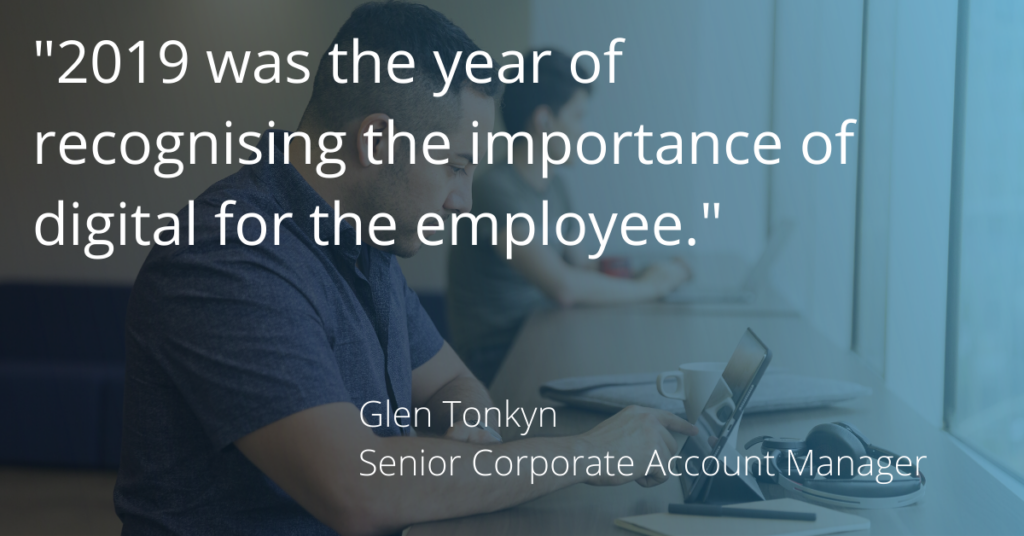
Glen Tonkyn, EMEA senior corporate account manager, offers a similar perspective: “Across all industries, people are starting to realise that there are a number of facets to the workplace that contribute to a positive ambience, ergonomics, comfort, accessibility, flexibility and digital flexibility,” he says. “2019 was the year of recognising the importance of digital for the employee, with organisations finding new ways to make their users much more productive. There has been a recognition that they must provide an enhanced digital capability which delivers to the user a continuously consistent high level of user experience, ensuring high levels of productivity all of the time. In 2020, scientific measures of end-user experience and quality with an accurate scoring system that allows organisations to see how good their users’ experience is, will be used as a mechanism that would be published from a digital workplace perspective as part of the annual report, and fundamentally used as a tool for bringing quality talent to their organisation, with the mentality of ‘Come and work for us! Look how healthy our organisation is to work for.’”
Trend #5: Digital transformation will continue to drive demand for innovative IT solutions
We’ve been talking about digital transformation for years, but the shift in mentality and operations is far from over.
In 2020, “DX (digital transformation) will still be key for IT using AI, cloud, IoT and many new technologies,” says Chizuru Tominaga, marketing manager for Lakeside in Japan.
As organizations continue to implement AI and machine learning technologies to extract insights from big data, interest in AIOps solutions for IT will likely grow as well.
Interest in digital experience monitoring solutions climbed steadily in 2019 including the release of Gartner’s Market Guide last fall. What will adoption look like in 2020?
According to Dick Murphy, global SI director, “2020 will be the tipping point year for digital experience monitoring. We’ll see more increase in the overall adoption of DEM in 2020 than in the previous three years combined.”
Trends Lakeside Is Anticipating in 2020
Closer to home, here are some things we’re looking forward to in the months to come.
“2020 will be a very exciting year at Lakeside Software. We are expecting a lot of growth and I am looking forward to watching the company evolve,” says Vita Olynyk, HR director.
How will Lakeside Software continue to thrive in 2020?
Paul Sisk, professional services director, offers this perspective: “Customer satisfaction is the key to future growth. With more complexity and competition in the DEM space than ever before, customer satisfaction must be a top priority for 2020. Our existing customers are our most independent voices at trade shows, seminars, industry roundtable meetings, etc. Keeping our existing customer base not just ‘existing’ but VERY satisfied with us in our delivery of what they need will ensure long relationships with companies far more than delivering a new feature that doesn’t move the needle for them.”
Got 2020 Predictions? Let Us Know!
What EUC trends will you be tracking in 2020? Let us know by tweeting at us (@Lakesidsoft) or tagging Lakeside Software on LinkedIn.
Subscribe to the Lakeside Newsletter
Receive platform tips, release updates, news and more

